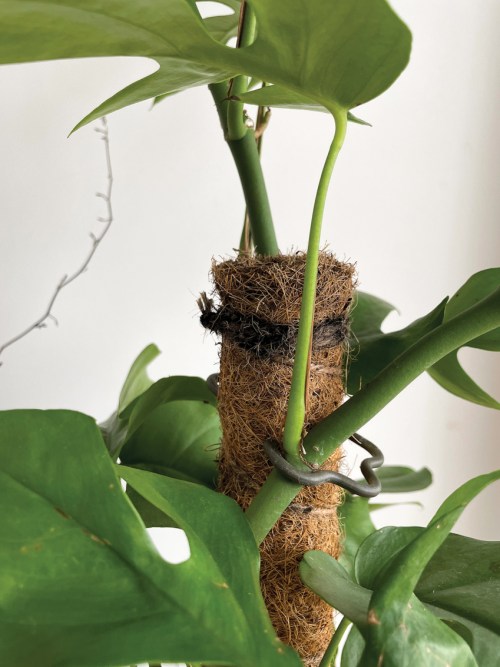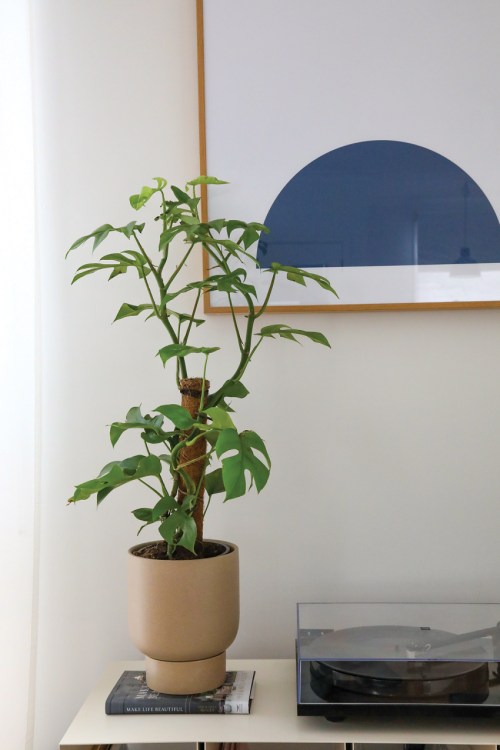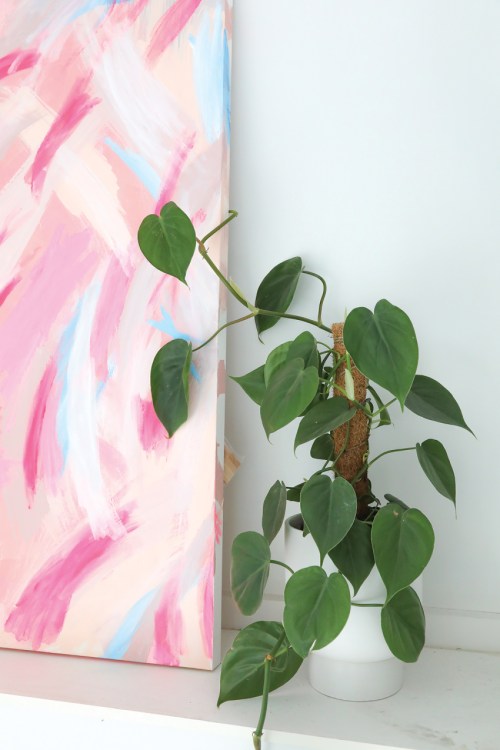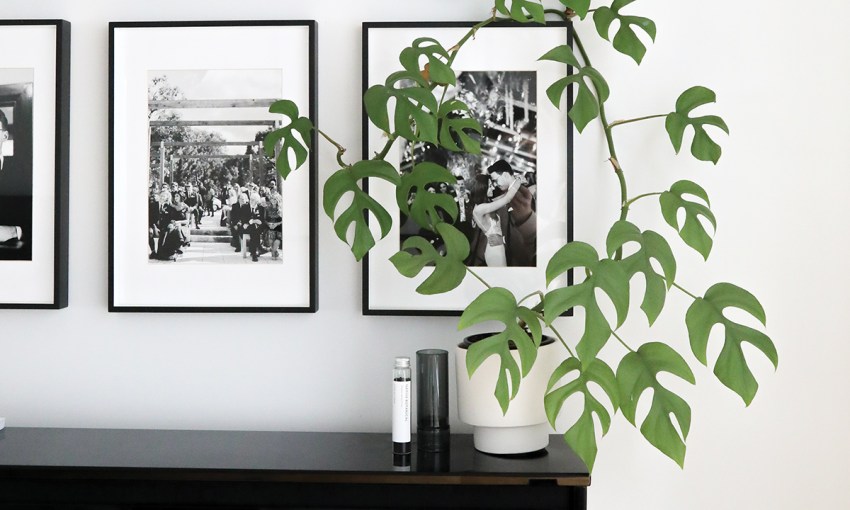If you’re looking to create vertical visual interest in your indoor oasis, then totem poles could prove the ideal solution for giving your plants the chance to grow to lofty heights.
Time to grow up
Sometimes, the only way is up. And if it’s your plants that are needing a lift, then a totem pole can be used to support and steady plants, particularly those that have large, dramatic leaves. The best type of plant to use in this way is a climbing variety so you can train it to reach great heights.
Numerous popular climbing plants – such as Epipremnum and Philodendron varieties – send out aerial roots along their stem as they grow. These aerial roots then look for something to attach themselves to, to continue to propel themselves upwards.
Enter, the totem pole.

Essentially, a totem pole is an upright pole that stakes directly into the pot that houses your indoor plant, providing a physical structure to support the growth habit of the plant.
But, how do you know if you need one? Like most gardening design decisions, the choice is up to you.
You may like to keep your climbing plants compact, or enjoy having them cascade over the edges of a shelf or bookcase. However, you may wish to grow one high up into a void or corner of the room, which makes a totem pole the perfect addition to help achieve this vision.
While other structures might do a good job of supporting the plant – for example a typical plant stake or designer wire trellis, or even a piece of wood – a totem pole made from sphagnum moss is ideal for climbing plants to grow up. The sphagnum moss pole will not only give the aerial roots something to attach to, but will allow them to draw moisture and gain micronutrients as well; much like they would on a tree in the wild.
When you provide climbing plants the opportunity to be supported, they will flourish and you will be rewarded with a beautiful upright growth habit.
The real trick to success is training the aerial roots to attach to the support, and again a sphagnum moss pole is perfect for this. The sphagnum moss will help ease the process as it keeps the point of contact between the totem pole and the aerial root of your plant moist, encouraging a bond to form between the two.

You can assist this process by tying a piece of twine, gently but firmly, around the stem of your plant and totem pole, adhering the two together. If the stem of your plant is long, you will need to tie it to the pole in several places so it is secure. Over time, the aerial roots that shoot from the tied-up stem will attach themselves to the totem and the plant will continue to grow upwards on the new support. The ties of twine can be removed once the roots have firmly attached.
Another great thing about sphagnum moss totem poles is that they’re also easy to make yourself.
Gather some PVC coated mesh (12x12mm grid size works well), tie wire, cutters and sphagnum moss. Soak the moss in water, while you get to work on creating a cylinder. To do this, cut the mesh to the diameter and height you wish your totem to be and roll it into a cylinder, keeping it open so you can fill it with your soaked sphagnum moss.
Once you have filled your cylinder as much as you can with the sphagnum moss, overlap the ends of the mesh to close your cylinder and secure it with tie wire. Then, add your freshly created moss pole to your potted climbing plant, and sit back and watch as your plant grows up.

Once the totem pole is in place, there is no need to treat your plant any differently, simply follow the usual care regime. If you choose a popular Syngonium, Scindapsus or Monstera variety, pop it in a spot that gets plenty of bright, indirect light, and let the top inch or two of soil dry out between watering, making sure the pot drains well.
If you find the wandering plant you’re trying to tame leans one way, be sure to turn the plant occasionally, to encourage even growth. The best tip for growing a plant on a totem pole is to get your spritz on! To do this, regularly mist your climbing plant’s aerial roots to encourage them to take to your totem pole.
While sphagnum moss totem poles are ideal, they are not the only way to get your indoor plants to reach great heights. You can train climbing plants up and across blank walls utilising wall or ceiling hooks, a decorative ladder or a DIY trellis – these all use the same process of tying the stems to your chosen support structure.
No matter which structure you choose to begin your adventure of training your plants to reach great heights, drop into your local garden centre to pick up your favourite climbing plant to get going.
This article first appeared in the Summer 2022 issue of SALIFE Gardens & Outdoor Living magazine.



